
Introduction
Do you want the fastest GeForce RTX 3080 Ti? Check. Do you want it liquid cooled? Check. Do you want it super quiet, and eye-catching? Check. Do you want the highest overclocking possible? Check. In today’s review, we take a look at the ASUS ROG STRIX LC GeForce RTX 3080 Ti OC Edition 12GB GDDR6X video card (ROG-STRIX-LC-RTX3080TI-O12G-GAMING). The “LC” is what this card is all about!
The ASUS ROG STRIX LC RTX 3080 Ti O12G GAMING is ASUS’s highest-tier, most enthusiast model, of the ROG STRIX brand based on the GeForce RTX 3080 Ti GPU. The “LC” stands for Liquid Cooling, that’s right, this is a closed-loop liquid cooled video card that ships completely pre-installed with no assembly required on your end. It’s an AIO-cooled video card.
If you browse ASUS’s complete lineup of GeForce RTX 3080 Ti-based video cards, you’ll find that it starts with the custom TUF branded video card with a 12G and O12G model. Then moving up in SKU we come to the ROG STRIX branded video card of which there is a 12G and O12G model, and we have reviewed the O12G model here.
Then, sitting at the very tippy-top is this card, the ROG STRIX LC model also in a 12G and O12G version. We have the O12G version of this card today to review. The difference is that the O12G version has a default factory overclock, while the 12G model is clocked by default at the reference clock speed. Just think of the O12G model as the “OC Edition” which has a factory overclock out-of-the-box.
GeForce RTX 3080 Ti
Before we look at the ASUS ROG STRIX LC, let’s go over the base specs on the GeForce RTX 3080 Ti. The GeForce RTX 3080 Ti has an MSRP of $1,199 and was launched in June of 2021. It’s based on SAMSUNG 8nm manufacturing process and NVIDIA’s Ampere architecture. The GPU is based on GA102-225 and has 10,240 CUDA Cores, 112 ROPs, 320 TMUs, 80 Ray Tracing Cores (2nd Gen), and 320 Tensor Cores (3rd Gen). It runs at a Boost Clock of 1665MHz with 12GB of GDDR6X memory at 19GHz on a 384-bit memory bus providing 912GB/s bandwidth. TDP is 350W.
ASUS ROG STRIX LC RTX 3080 Ti O12G GAMING
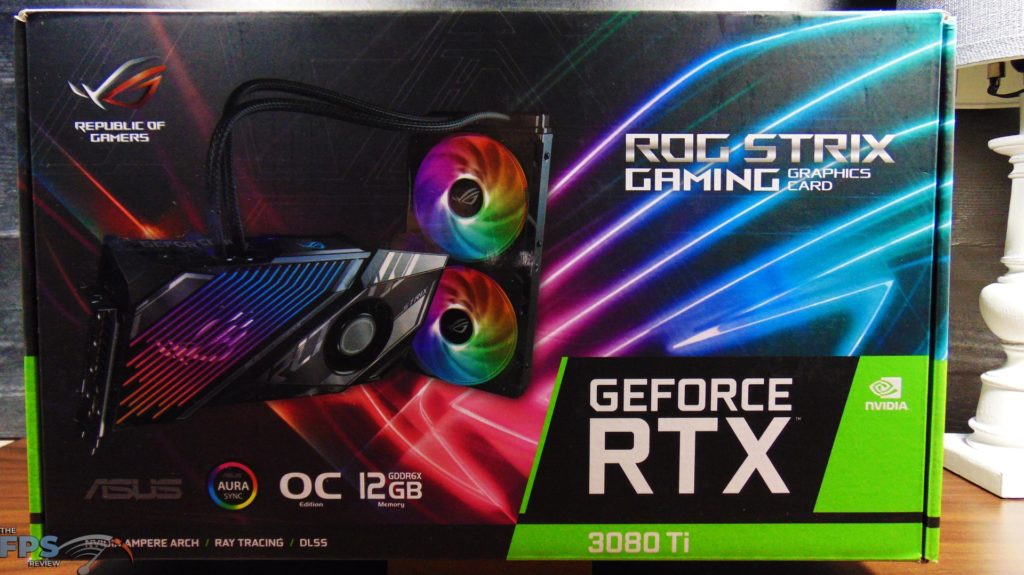


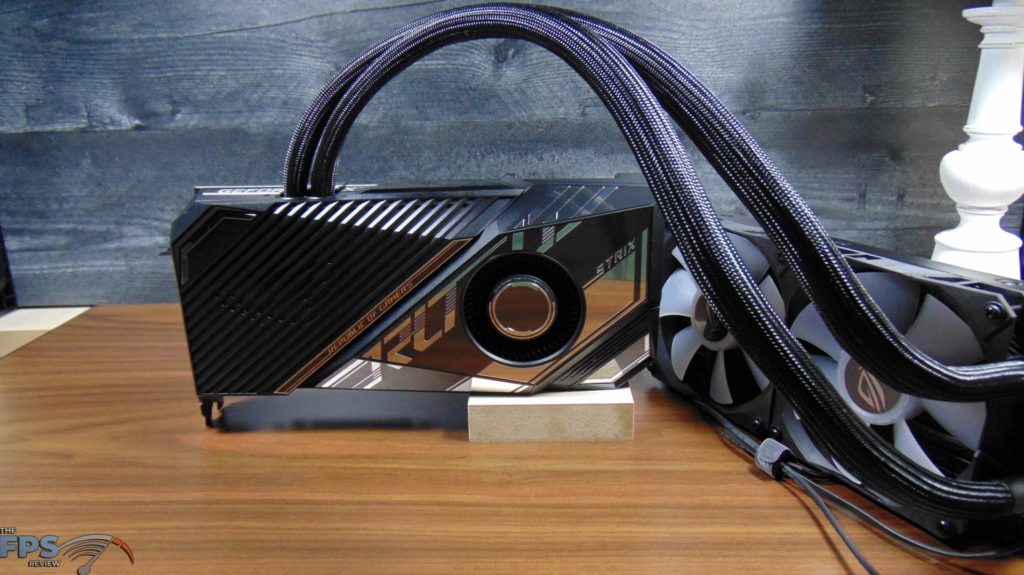
This video card is quite unique, as it sports the video card itself with an attached and pre-installed 240mm radiator with two 120mm fans. The card itself also features a blower-style fan to keep the VRMs and power-delivery actively cooled on the video card PCB as well. Once again, we are lead with a very big video card, and an overall large format considering it has a 240mm radiator hanging off of it that will need to be installed in your case.
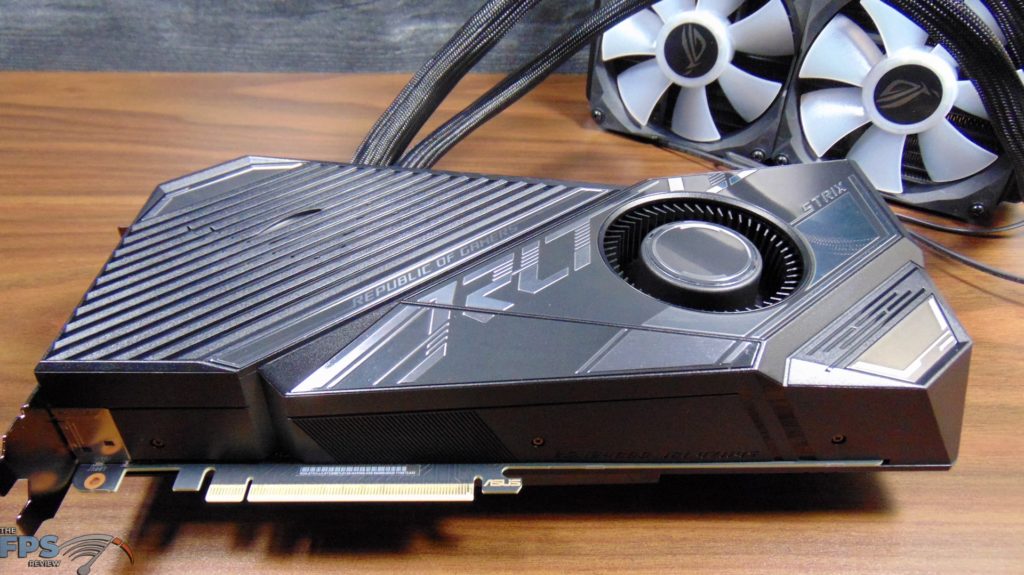

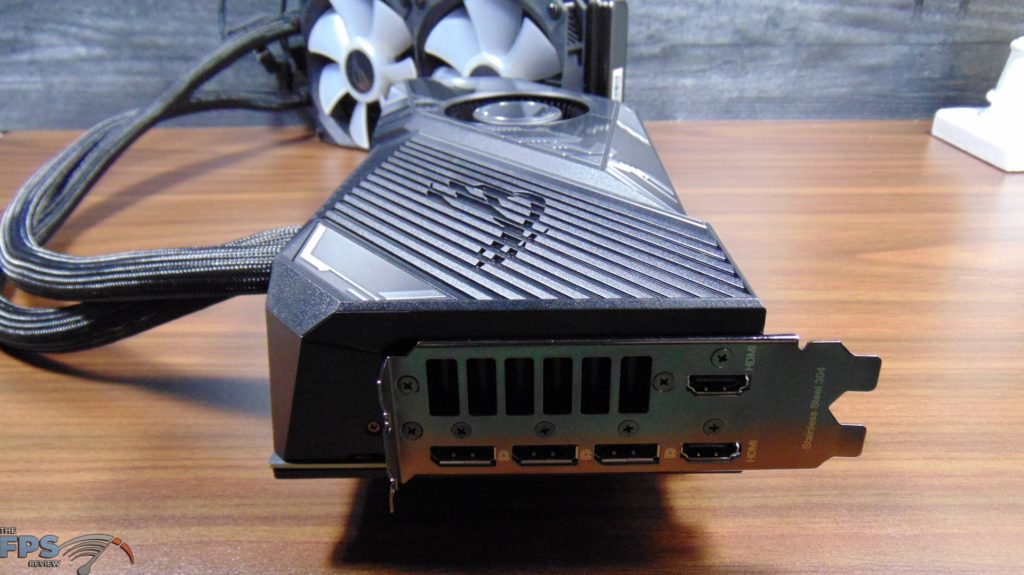
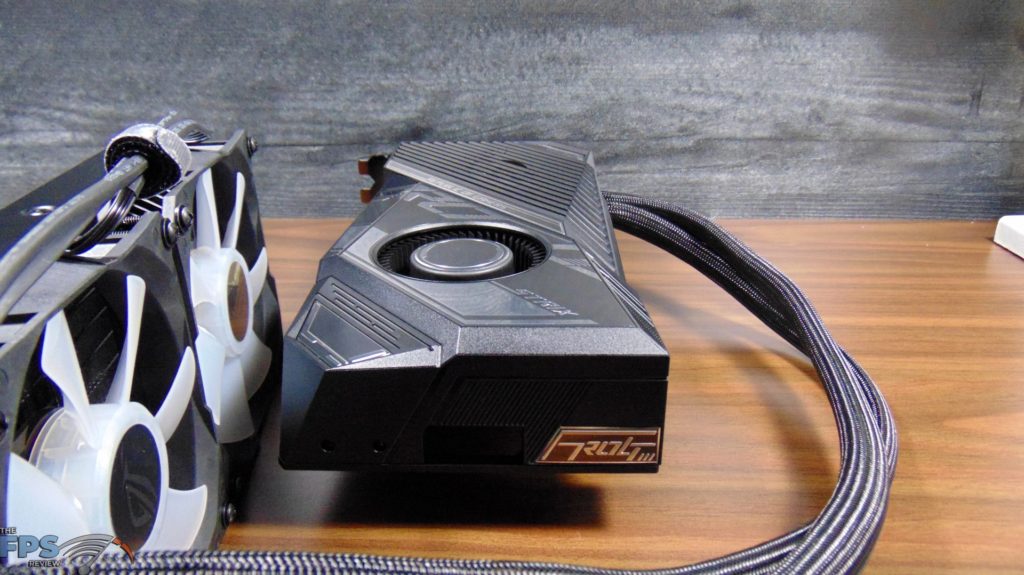
The video card itself measures 11.5 inches long, 5.2 inches wide and 2 inches tall. It is a 2.6 Slot video card. While this isn’t the longest video card we’ve seen, it is a fat and wide one at 5.2 inches. For comparison, the Founders Edition is 11.22 inches long and 4.4 inches wide. The girth of this video card could be a problem in cases that don’t have a lot of room between the side panel and components. Then, don’t forget you also have to install the radiator. The radiator measures 10.7 inches long, 4.7 inches wide, and 2 inches in height, including the fan.

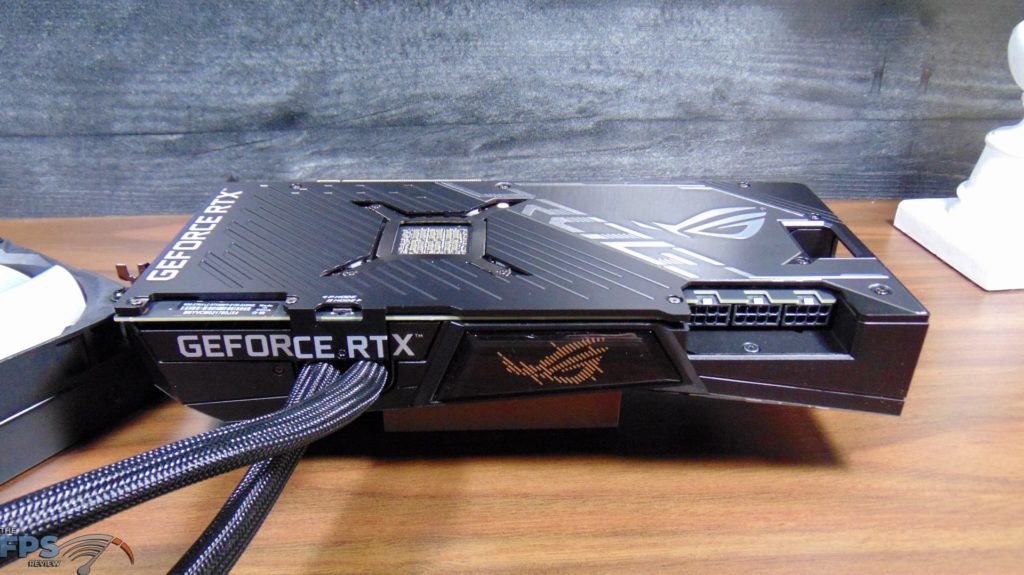
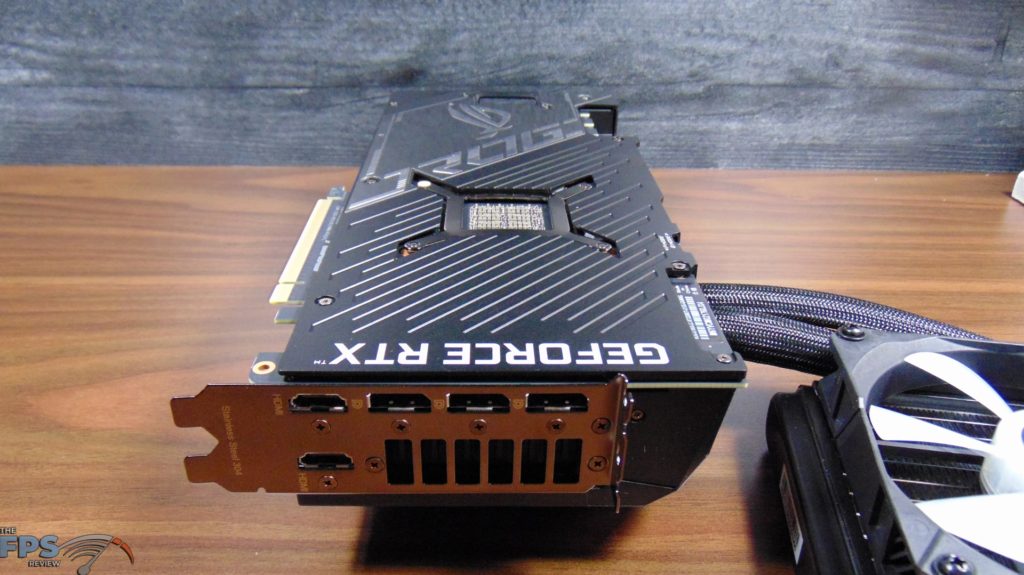
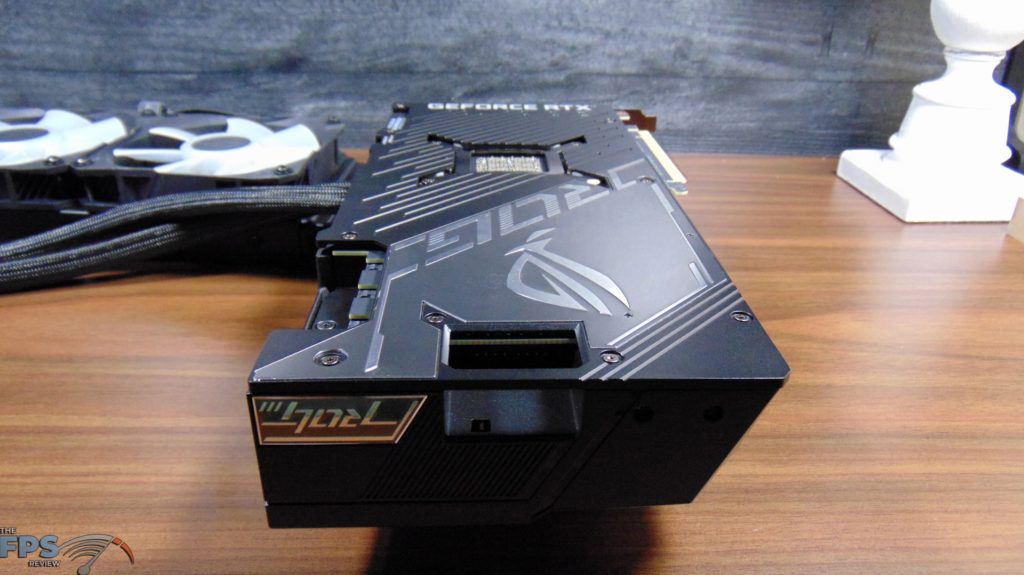
When you install this beast, what this gets you is a video card that has a factory overclocked boost clock of 1830MHz out-of-the-box. This is compared to the reference spec of 1665MHz. You can enable an “OC Mode” in software via ASUS GPU Tweak II that boosts this to 1860MHz with a click of a button for easy overclocking. Unfortunately, the memory is not also factory overclocked, even though it is certainly cooled well enough to be, it runs at the reference 19GHz out-of-the-box. There is a dual-BIOS on this video card with a BIOS switch. It ships in “Performance” mode which simply runs a faster fan profile.
All of this nets you a recommended PSU of 850W for this video card. You need three 8-pin PCIe power connectors to run this video card. There is an onboard circuit that monitors PSU rail voltage. The circuit is fast enough to catch any transients that result in the rail voltage dropping too low. If that happens, a red LED will light up to indicate a power supply issue. We recommend three dedicated cables, no splitting power off of one. In terms of I/O there are three DisplayPort 1.4a ports and two HDMI 2.1 ports.
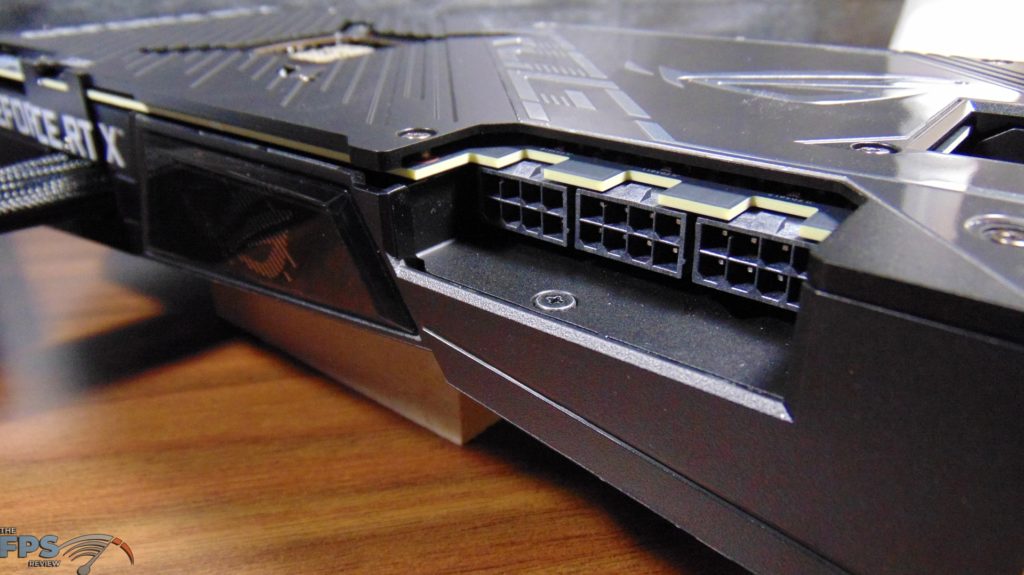
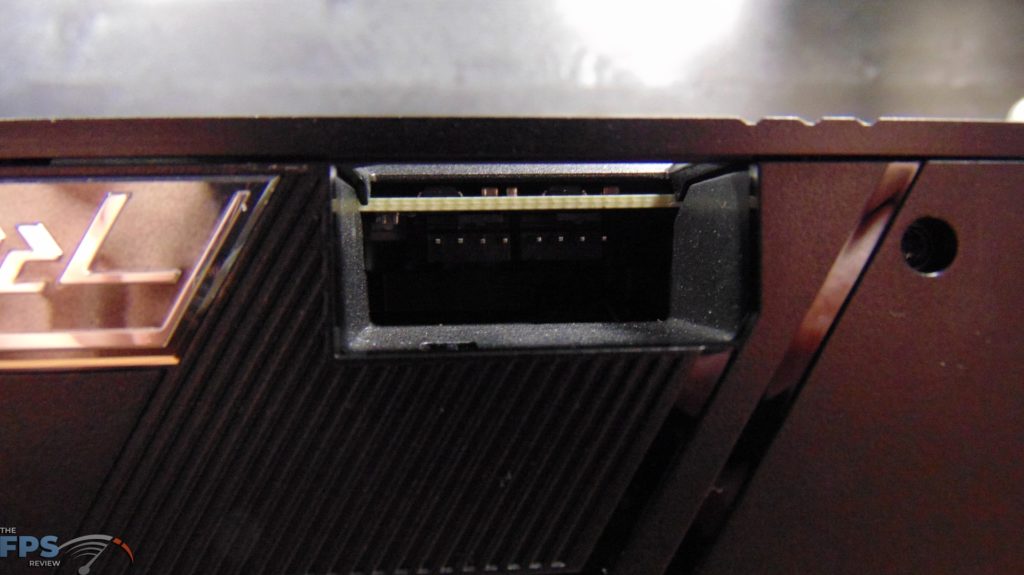

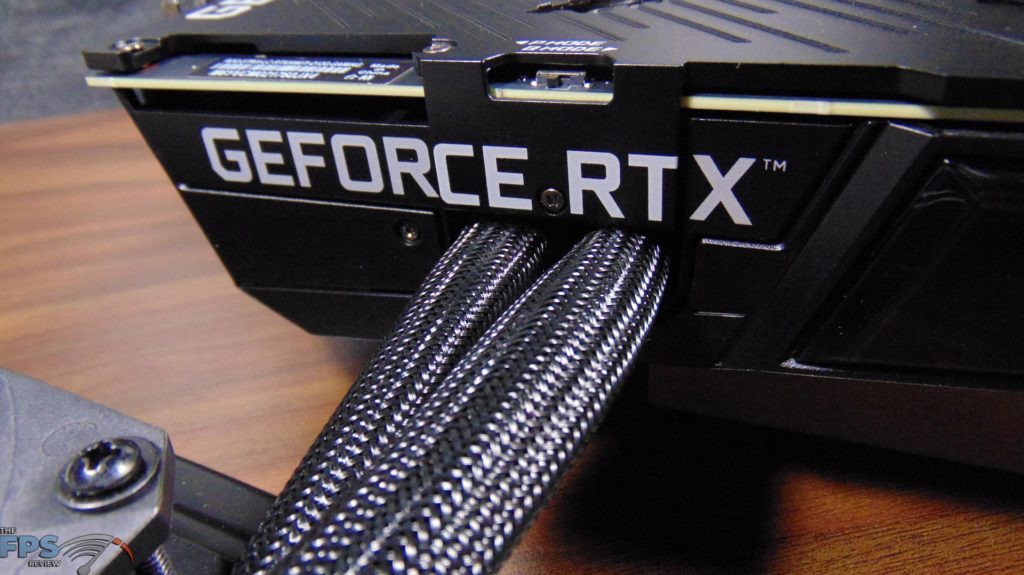

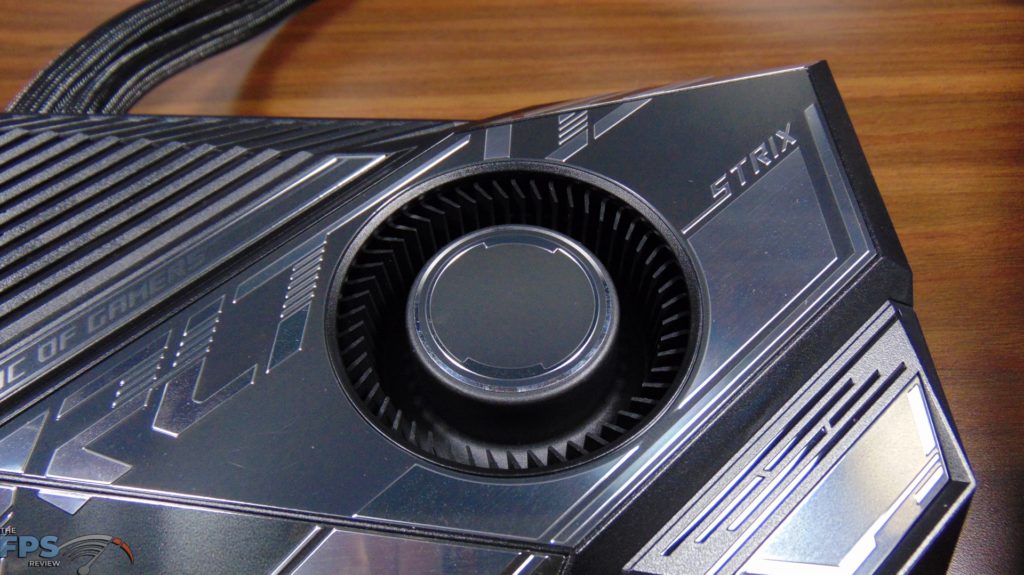
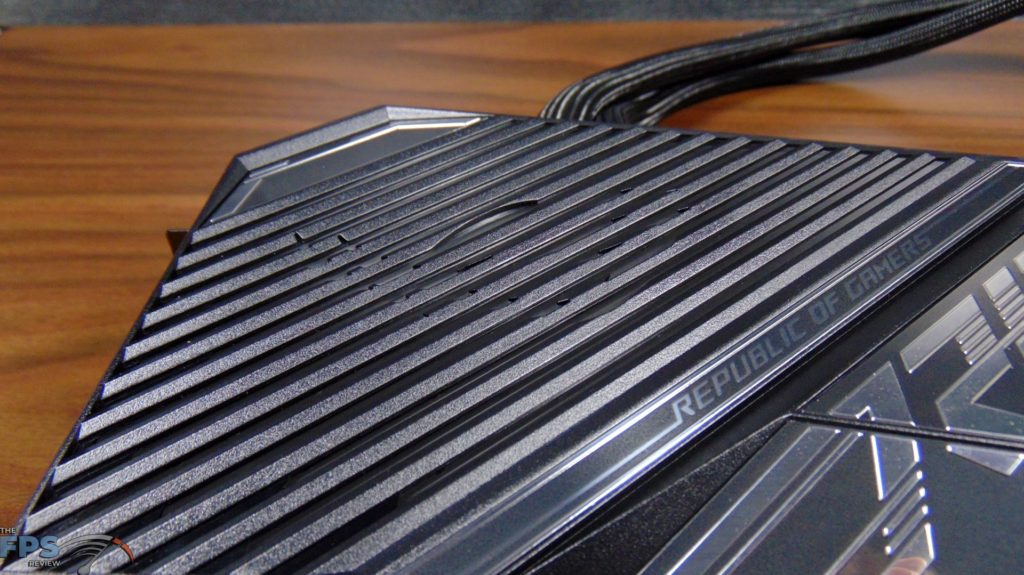
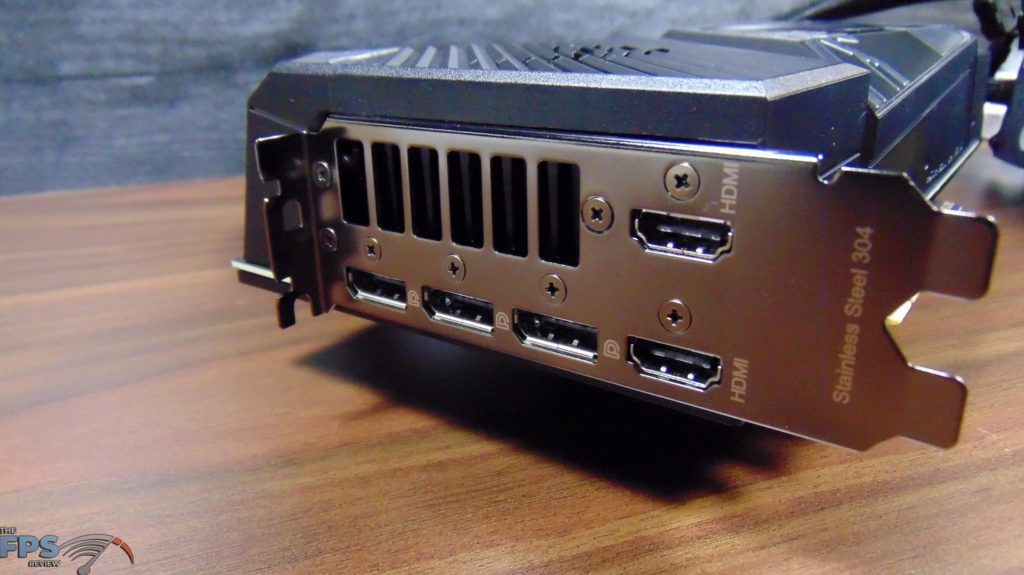
So, what does liquid cooling do for you? Well, this video card allows ultra-quiet thermal performance to the video card for a powerful computer build. To make this liquid cooling possible, ASUS is using a full-coverage cold plate that covers the GPU die and memory modules. The onboard cooling consists of a low-profile heatsink under the shroud to keep power delivery cooled with a blower-style fan. The hot air of this is exhausted out the back of the video card.
The ROG STRIX LC 3080 Ti uses ASUS Super Alloy Power II parts that are premium components including top-shelf capacitors, chokes, and MOSFETs. The video card also supports FANCONNECT II which has two PWM FanConnect headers that provide tuning by GPU temperatures for chassis fans. The backside of the video card is covered in a full protective metal backplate that reinforces the PCB and protects components. Stainless steel is used for the I/O bracket.
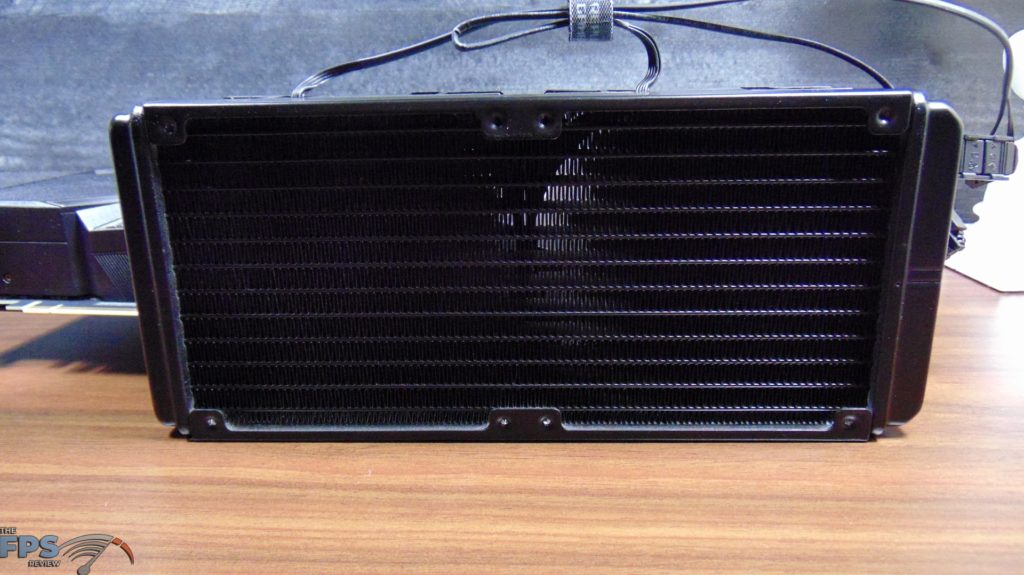
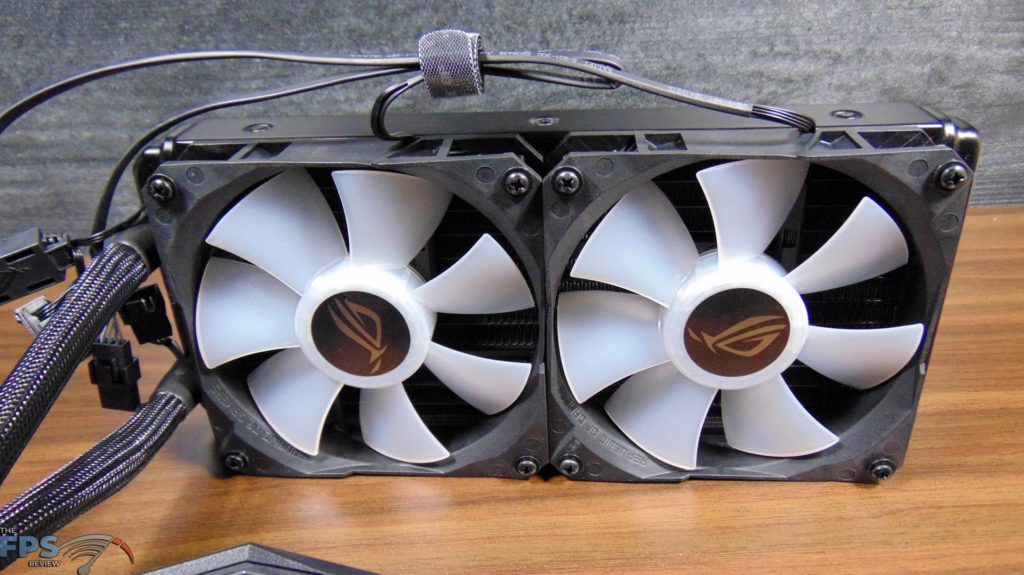
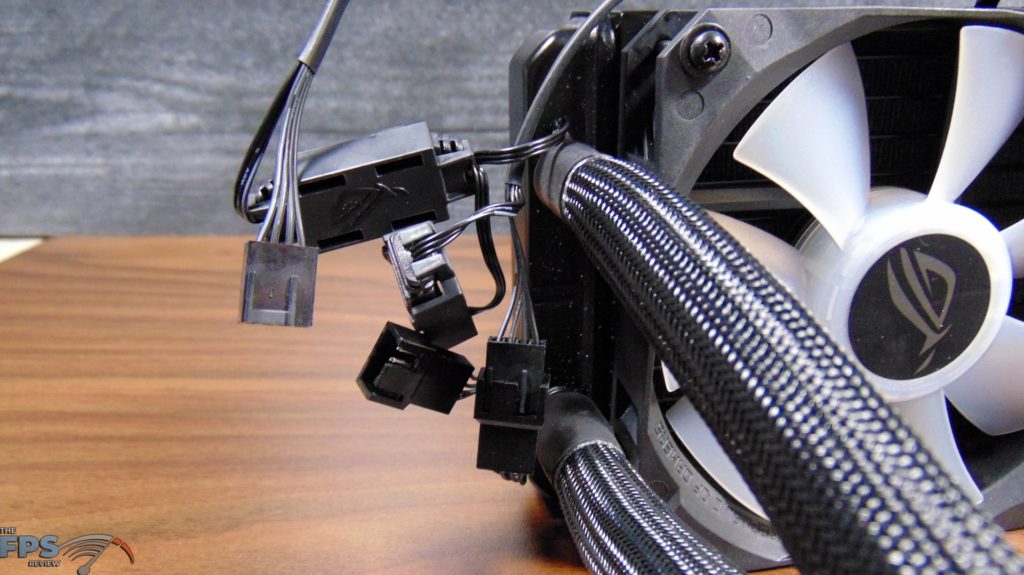

The two 120mm ARGB fans on the radiator are high CFM static pressure fans. The video card uses 560mm tubing to help compatibility with large cases or builds that feature a CPU AIO cooler. The radiator fan cables are protected inside the tubing’s mesh lining and come pre-connected for a nice and tidy configuration with no dangling cables. In fact, ASUS has even put a strap up top that ties up the cables to keep them neatly out of the way.
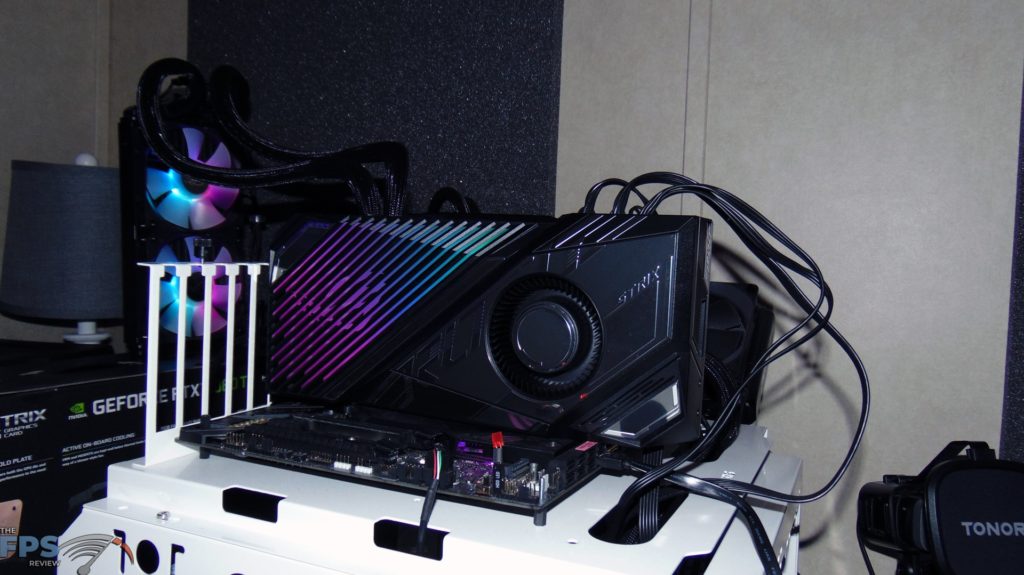

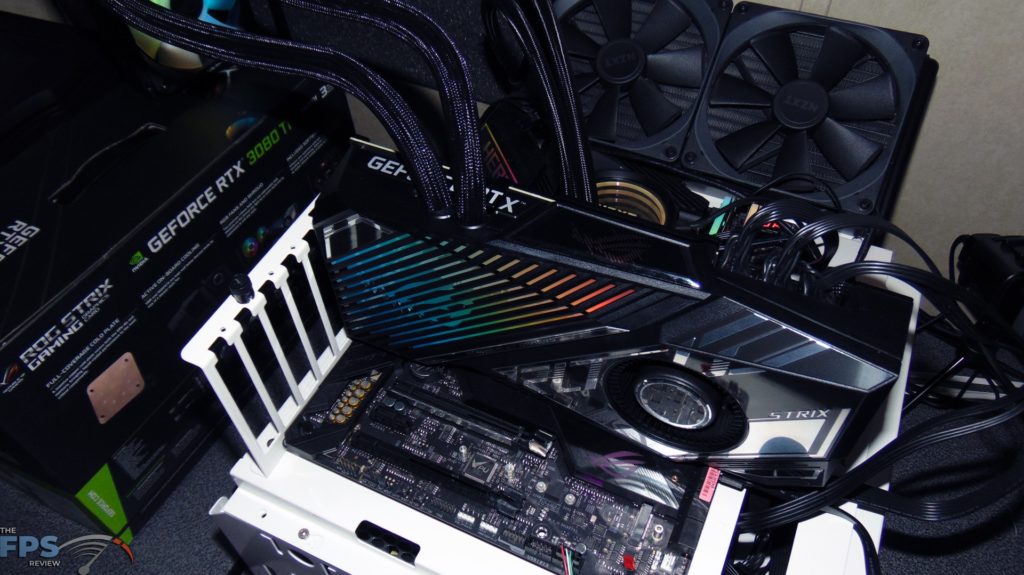



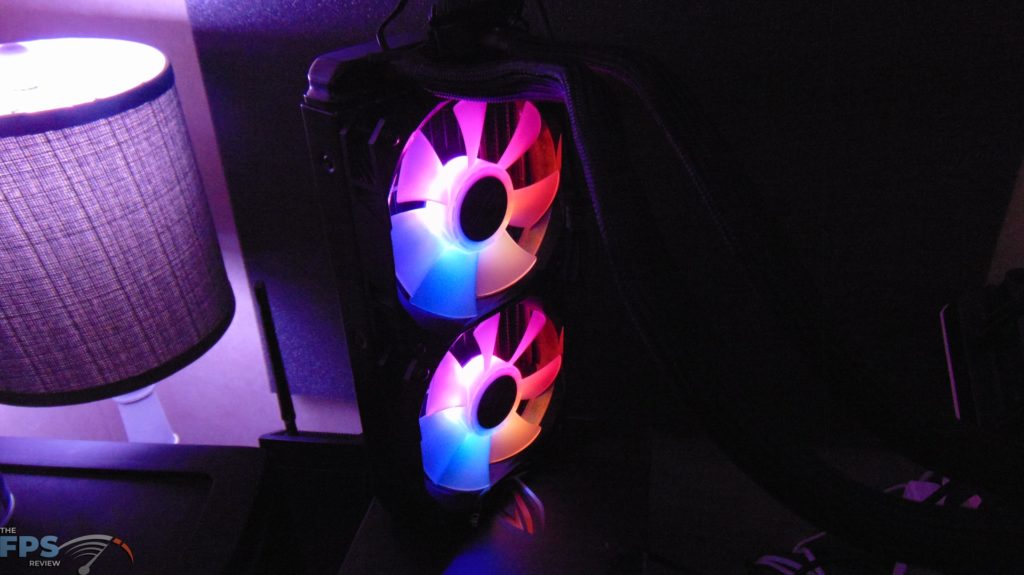
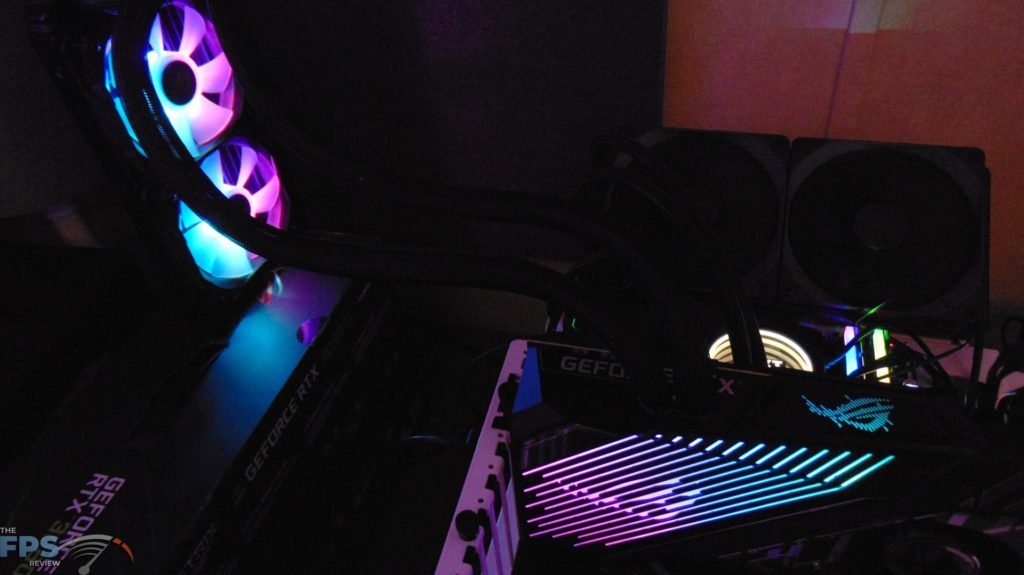
The video card supports ASUS AURA SYNC addressable RGB lighting. There is RGB on the video card, as well as the two fans on the radiator, and can be fully tweaked.
